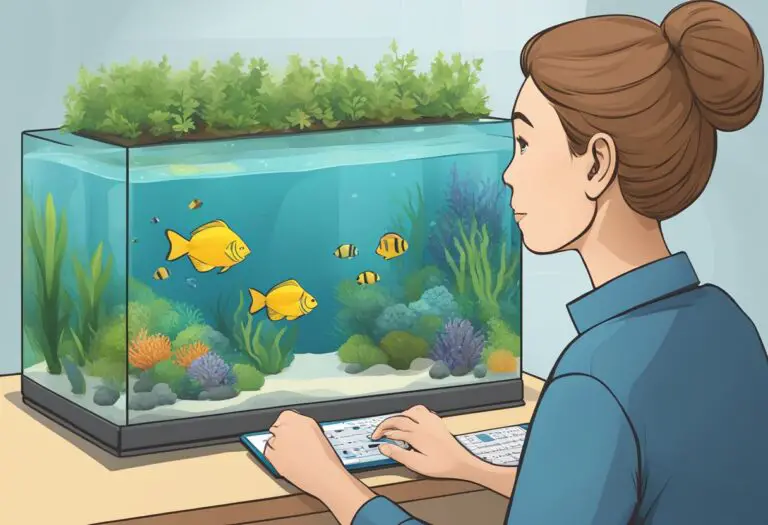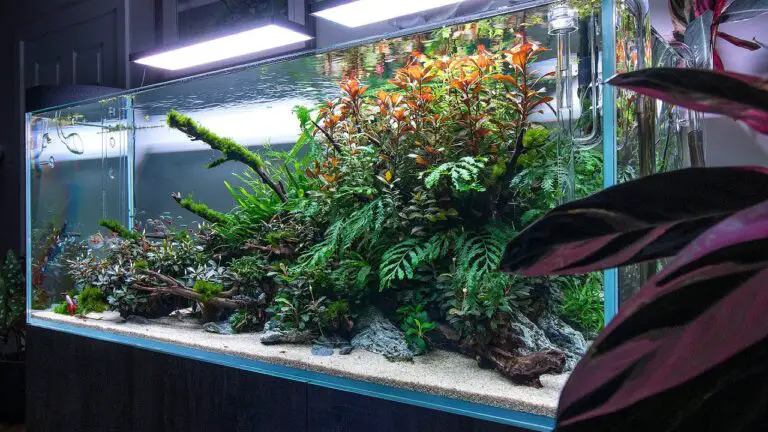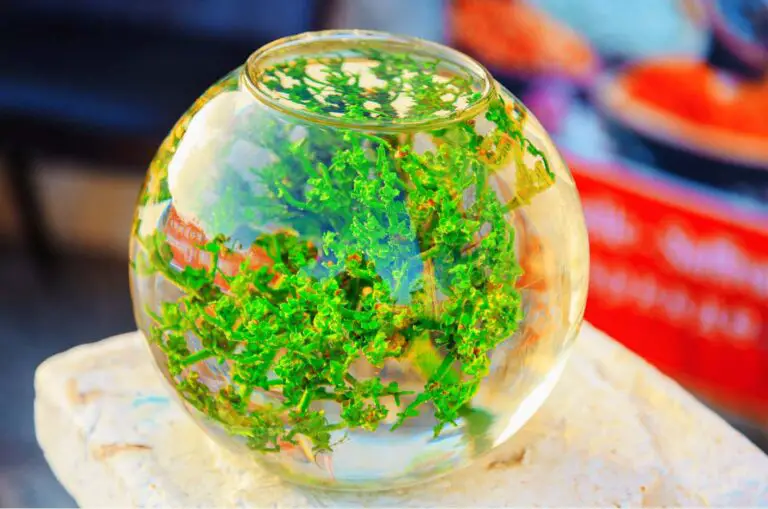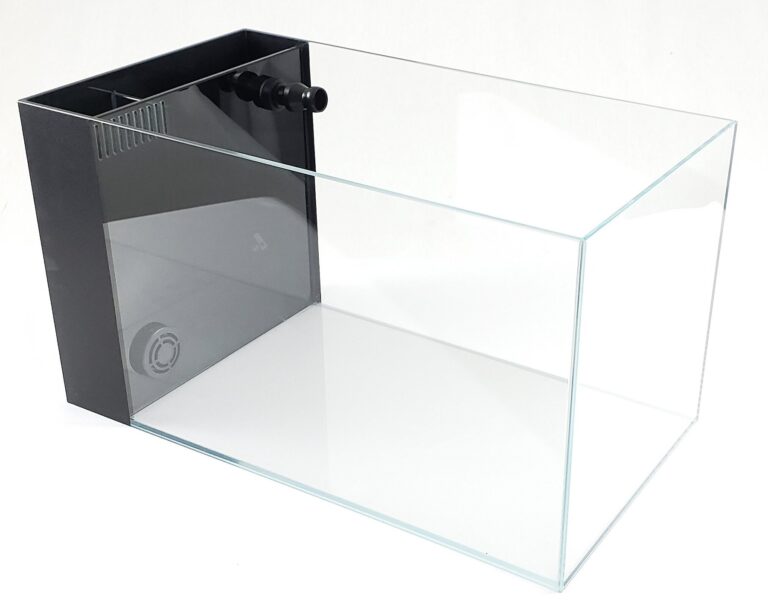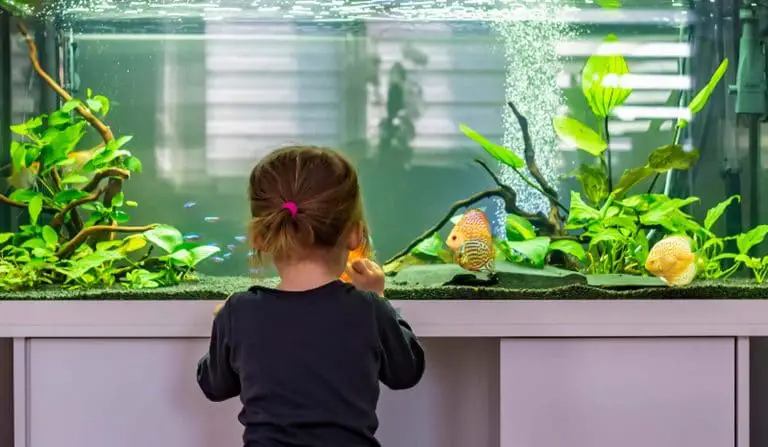Setting Up a 55 Gallon Fish Tank: A Beginner’s Guide
Setting up a 55 gallon fish tank can be an exciting and rewarding experience for both novice and experienced fish keepers. However, it can also be a daunting task, especially if you are new to the hobby. There are several things to consider when setting up a 55-gallon fish tank, including the type of fish you want to keep, the equipment you will need, and the overall design of the tank.
The first step in setting up a 55-gallon fish tank is to decide what type of fish you want to keep. Different fish have different needs, and it is important to choose fish that are compatible with each other and with the size of your tank. Some good choices for a 55-gallon tank include angelfish, cichlids, tetras, and gouramis.
Once you have decided on the type of fish you want to keep, the next step is to gather the necessary equipment. This includes a filter, heater, lighting, substrate, and decorations. It is important to choose high-quality equipment that is appropriate for the size of your tank and the needs of your fish. With the right equipment and a little bit of planning, you can create a beautiful and healthy environment for your fish to thrive in.
Selecting the Tank
When it comes to setting up a 55-gallon fish tank, selecting the right tank is crucial. It’s important to consider the size, shape, and material of the tank to ensure the health and safety of your fish. Here are some factors to keep in mind:
Tank Size and Shape
The size and shape of the tank will depend on the type and number of fish you plan to keep. A 55-gallon tank is a good size for beginners, as it provides enough space for a variety of fish. However, it’s important to note that a taller tank may not be suitable for all fish, as they need enough swimming space. A longer and wider tank is generally better for most fish.
Tank Material
There are three main types of tank materials: glass, acrylic, and plastic. Glass tanks are the most common and affordable, but they can be fragile and heavy. Acrylic tanks are more durable and lightweight, but they can be more expensive. Plastic tanks are the cheapest option, but they are not as durable and can scratch easily.
Tank Accessories
When selecting a tank, it’s important to consider the accessories you’ll need, such as a filter, heater, and lighting. Make sure the tank is compatible with the accessories you plan to use. It’s also a good idea to invest in a sturdy stand to support the weight of the tank and accessories.
Choosing the Right Location
Choosing the right location for a 55-gallon fish tank is essential. It is a major decision that can impact the health and well-being of your fish. Here are a few things to consider when selecting a location for your fish tank:
- Size of the tank: A 55-gallon fish tank is quite large and heavy, so you need to ensure that the location you choose can support its weight. Make sure that the floor is level and sturdy enough to hold the tank and its contents.
- Accessibility: The location you choose should be easily accessible for maintenance and cleaning. You should be able to reach the tank from all sides to clean it, change the water, and feed the fish.
- Lighting: The location should have adequate lighting. Fish tanks need a good source of natural light, but direct sunlight can lead to algae growth and temperature fluctuations. Consider placing the tank near a window, but avoid direct sunlight.
- Temperature: The location should be away from drafty areas and heating or cooling vents. Temperature fluctuations can be harmful to fish, so make sure that the location you choose has a consistent temperature.
- Noise: Fish can be sensitive to noise, so avoid placing the tank in a noisy area. Keep it away from loud appliances or areas with heavy foot traffic.
Once you have identified a suitable location, it is important to ensure that the tank is level. Uneven surfaces can cause stress on the tank and lead to leaks or cracks. Use a level to ensure that the tank is sitting evenly and adjust as necessary.
Choosing the right location for your 55-gallon fish tank is vital to the health and well-being of your fish. Consider all of the factors listed above to ensure that you choose a location that is safe, accessible, and conducive to a healthy environment for your fish.
Assembling the Equipment
Before you begin setting up your 55-gallon fish tank, it’s important to have all the necessary equipment assembled and ready to go. Here’s a list of the equipment you’ll need:
- 55-gallon tank
- Stand or cabinet
- Filter
- Heater
- Thermometer
- Lighting
- Air pump
- Air stone
- Substrate
- Decorations
- Water conditioner
- Test kit
- Fish food
Once you have all the necessary equipment, it’s time to start assembling your tank. Begin by setting up your stand or cabinet in the desired location. Make sure it’s level and sturdy enough to support the weight of the tank when it’s filled with water.
Next, place your tank on top of the stand or cabinet. Be sure to clean the tank thoroughly with warm water and a non-toxic cleaner before adding any equipment or water. Once the tank is clean, add your substrate and decorations, making sure they’re arranged in a way that’s aesthetically pleasing and provides plenty of hiding places for your fish.
Now it’s time to add your equipment. Install your filter, heater, and thermometer according to the manufacturer’s instructions. Set up your lighting and air pump, making sure they’re positioned in a way that provides adequate light and oxygenation for your fish.
Finally, add water to your tank and treat it with a water conditioner to remove any chlorine or other harmful chemicals. Use a test kit to check the water’s pH, ammonia, nitrite, and nitrate levels, and adjust them as necessary. Once your water is properly conditioned and balanced, it’s time to add your fish and start enjoying your new 55-gallon fish tank!
Adding Substrate and Decorations
Now that you have your tank set up and filled with water, it’s time to add substrate and decorations. The substrate is the material that lines the bottom of the tank, and it serves as a home for beneficial bacteria that help break down waste in the tank. Decorations not only add aesthetic appeal to the tank, but they also provide hiding places for fish and other aquatic creatures.
When choosing substrate, make sure it’s appropriate for the type of fish you plan to keep. Some fish prefer sand while others prefer gravel. It’s also important to rinse the substrate thoroughly before adding it to the tank to remove any dust or debris.
When adding decorations, consider the needs of your fish. Some fish prefer lots of hiding places, while others prefer open spaces to swim. It’s also important to choose decorations that won’t harm your fish. Avoid decorations with sharp edges or those that can leach harmful chemicals into the water.
Once you’ve chosen your substrate and decorations, it’s time to add them to the tank. Start by adding the substrate to the bottom of the tank. Make sure it’s evenly distributed and that there’s enough to cover the bottom of the tank to a depth of at least 2 inches. Next, add your decorations. Arrange them in a way that looks natural and provides hiding places for your fish.
Remember, adding substrate and decorations is an important step in setting up your fish tank. Take the time to choose the right materials and arrange them in a way that meets the needs of your fish. With a little care and attention, you’ll have a beautiful and healthy tank that you and your fish can enjoy for years to come.
Filling the Tank with Water
Now that you have prepared your 55-gallon fish tank, it’s time to fill it with water. Here are some steps to follow:
- Place a clean bucket in the tank and fill it with water from your tap. This will help to prevent the substrate and decorations from being disturbed.
- Add a water conditioner to the bucket, following the manufacturer’s instructions. This will remove any harmful chemicals, such as chlorine and chloramine, from the water.
- Pour the water into the tank slowly, taking care not to disturb the substrate or decorations. It’s important to fill the tank all the way to the top.
- Once the tank is full, turn on the filter and heater. Allow the water to circulate for at least 24 hours before adding any fish.
It’s important to note that the quality of the water you use is crucial to the health of your fish. Make sure to use dechlorinated water, and avoid using distilled or reverse osmosis water, as it lacks the necessary minerals and nutrients that fish need to thrive.
Additionally, it’s recommended that you test the water for pH, ammonia, nitrite, and nitrate levels before adding any fish. This will help you ensure that the water is safe and healthy for your aquatic pets.
Cycling the Tank
Before adding any fish to your new 55-gallon tank, you need to cycle it. Cycling is the process of establishing beneficial bacteria in the aquarium that will break down waste products and keep the water safe for fish to live in. This process can take anywhere from a few weeks to a few months, but it is essential for the health and well-being of your fish.
There are a few different methods for cycling a tank, but one of the most common is the fishless cycle. To do this, you will need to add a source of ammonia to the tank, such as fish food or pure ammonia. As the ammonia breaks down, it will create nitrites, which are toxic to fish. Eventually, nitrites will be converted into nitrates, which are less harmful to fish but still need to be removed through regular water changes.
During the cycling process, you will need to test the water regularly to monitor the levels of ammonia, nitrites, and nitrates. You can use a test kit to do this, which will give you accurate readings of the water parameters. Once the ammonia and nitrite levels have dropped to zero, and nitrates are present, the tank is fully cycled, and it is safe to add fish.
It’s important to note that cycling a tank is not a one-time event. You will need to continue monitoring the water parameters and performing regular water changes to keep the tank healthy for your fish. Over time, the beneficial bacteria in the tank will establish a natural balance that will help keep the water safe for your fish to live in.
Here are some tips to keep in mind when cycling your 55-gallon tank:
- Be patient – cycling takes time, and rushing the process can be harmful to your fish.
- Test the water regularly to monitor the levels of ammonia, nitrites, and nitrates.
- Perform regular water changes to remove excess nitrates and other waste products.
- Consider using a bacterial supplement to speed up the cycling process.
By following these tips and being patient, you can successfully cycle your 55-gallon tank and provide a healthy environment for your fish to thrive in.
Introducing Fish to the Tank
After setting up your 55 gallon fish tank, it’s time to add some fish to it. However, you need to be careful while introducing fish to the tank. Here are some steps to follow:
- Start with a few fish: Don’t add too many fish at once. Start with a few fish and gradually increase the number over time. Adding too many fish at once can cause stress to the fish and affect the water quality.
- Acclimate the fish: Before adding the fish to the tank, you need to acclimate them to the new environment. Float the fish in a plastic bag on the surface of the tank for about 15-20 minutes. This will allow the temperature of the water in the bag to equalize with the temperature of the water in the tank.
- Release the fish: After acclimating the fish, release them into the tank. Do not pour the water from the bag into the tank as it may introduce harmful chemicals and bacteria into the tank.
- Observe the fish: After adding the fish to the tank, observe them for a few days. Make sure they are swimming and eating normally. If you notice any abnormal behavior, it may indicate that the fish are stressed or sick.
- Maintain water quality: Regularly test the water quality and maintain it by doing water changes and cleaning the tank. Poor water quality can lead to stress and diseases in fish.
By following these steps, you can safely introduce fish to your 55 gallon fish tank and provide them with a healthy environment to thrive in.
Maintaining the Tank
Maintaining the tank is an essential part of keeping your fish healthy and happy. A clean and well-maintained tank will help prevent the growth of harmful bacteria and ensure that your fish have a safe and comfortable environment to live in.
Here are a few tips for maintaining your 55 gallon fish tank:
- Perform regular water changes – It’s important to change a portion of the water in your tank every 1-2 weeks. This will help remove any excess waste and toxins that may have built up in the water.
- Clean the filter – Your filter is responsible for removing debris and waste from the water. It’s important to clean or replace the filter media every 4-6 weeks to ensure that it’s working properly.
- Test the water – Use a water testing kit to check the levels of ammonia, nitrite, and nitrate in your tank. High levels of these compounds can be harmful to your fish and indicate that a water change is needed.
- Scrub algae – Algae can build up on the walls of your tank and create an unsightly appearance. Use an algae scraper or pad to remove any algae growth on a regular basis.
- Monitor temperature – Keep an eye on the temperature of your tank to ensure that it remains within the appropriate range for your fish species.
By following these tips and maintaining a regular cleaning schedule, you can help ensure that your 55 gallon fish tank remains a healthy and enjoyable environment for your fish to thrive in.

